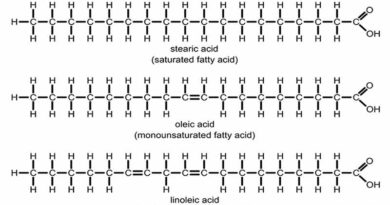Exercise: Is a lot more a lot better?
Introduction
A study was published in the BMJ on 9th August 2016. The study was called “Physical activity and risk of breast cancer, colon cancer, diabetes, ischemic heart disease, and ischemic stroke events: systematic review and dose-response meta-analysis for the Global Burden of Disease Study 2013.” ABC Australia kept it simple with “Are the WHO [World Health Organisation] exercise recommendations too low?” The press release headline on the site of one of the universities (Queensland) behind the research was “Health study calls for five-fold boost to activity levels.”
The press release reported that the University of Queensland researcher, Dr Lennert Veerman, thought that a significant boost to physical activity level recommendations to the equivalent of 15 to 20 hours of brisk walking or six to eight hours of running a week could reduce breast and bowel cancer, diabetes, heart disease and stroke:
“Although the first minutes of activity do most for health, our research results suggest activity needs to be several times higher than current World Health Organisation (WHO) recommendations to achieve larger reductions in risks of these diseases,” Dr Veerman said.
“WHO advises a minimum total physical activity level of 10 metabolic equivalent (MET) hours a week, but the study found health gains accumulated up to levels of 50 to 70 MET-hours a week.”
Before we all try to work out where we’re going to find 2-3 extra hours each day (and the rest), let’s take a look at the study and if there would be any real benefit in doing multiple times more than the current recommended level of exercise…
Current guidelines
The WHO recommends that adults aged 18-64 do at least 150 minutes of moderate intensity aerobic physical activity throughout the week OR at least 75 minutes of vigorous intensity aerobic physical activity OR an equivalent combination of moderate and vigorous activity.
The Kyu et al paper reports everything in Metabolic Equivalent Minutes (METs). METs take into account the intensity of activity. As a rough guide, moderate intensity activity is approximately 3-5.9 METs and vigorous intensity activity is 6 or more METs. Hence someone doing moderate exercise for the WHO recommended 150 minutes a week is clocking up approximately 600 METs (to use the same equivalent as is shown in the article abstract).
We won’t worry too much about METs – we’ll stick to considering if doing five (or many more) times more exercise than is currently recommended is a good idea.
The study
The study was a meta-analysis, which is generally viewed as the gold standard of evidence levels. This means that the researchers pooled a lot of data together to get a more robust outcome than just looking at one, or a few trials. This meta-analysis pooled prospective cohort studies, however, not Randomised Controlled Trials (RCTs), so it has the limitation of looking at associations between two things. It cannot conclude if A causes B – just that A and B might be observed to have a relationship.
The research team examined all data in academic databases, published between 1980 and 2016, which looked at the associations between total physical activity (of any kind) and the risk of five diseases: breast cancer; colon cancer; diabetes; ischemic heart disease and ischemic stroke events. 174 studies met their criteria: 35 for breast cancer; 19 for colon cancer; 55 for diabetes; 43 for heart disease and 26 for strokes (a few articles included data for more than one of the five diseases). The 174 studies covered 149,184,285 total person years; that’s large enough!
The study concluded
“Although higher levels of total physical activity were significantly associated with lower risk for all outcomes, major gains occurred at lower levels of activity (up to 3000-4000 metabolic equivalent (MET) minutes/week). For example, individuals with a total activity level of 600 MET minutes/week (the minimum recommended level) had a 2% lower risk of diabetes compared with those reporting no physical activity. An increase from 600 to 3600 MET minutes/week reduced the risk by an additional 19%. The same amount of increase yielded much smaller returns at higher levels of activity: an increase of total activity from 9000 to 12,000 MET minutes/week reduced the risk of diabetes by only 0.6%. Compared with insufficiently active individuals (total activity <600 MET minutes/week), the risk reduction for those in the highly active category (≥8000 MET minutes/week) was 14% (relative risk 0.863, 95% uncertainty interval 0.829 to 0.900) for breast cancer; 21% (0.789, 0.735 to 0.850) for colon cancer; 28% (0.722, 0.678 to 0.768) for diabetes; 25% (0.754, 0.704 to 0.809) for ischemic heart disease; and 26% (0.736, 0.659 to 0.811) for ischemic stroke.”
The key messages from above are:
1) Doing the minimum recommended level of exercise (600 METs/week) gave someone a 2% lower relative (not absolute) risk of diabetes compared with someone doing nothing. Big deal.
2) Doing 6 times the recommended minimum reduced the relative risk by an additional 19% (we’ll come on to the numbers).
3) Comparing those doing 15 times the recommended minimum with those doing 20 times the recommended minimum made naff all difference (0.6%). Thank goodness for that!
4) Comparing people doing less than the recommended minimum with those doing more than 13 times the recommended minimum gave relative risk reductions of 14% for breast cancer, 21% for colon cancer, 28% for diabetes, 25% for ischemic heart disease and 26% for ischemic stroke.
We’ll see how impressive these are next…
Absolute risk
I wrote to the corresponding author to see if the researchers had events per disease, so that absolute risk could be calculated. The corresponding author replied very quickly and helpfully that they did not have event data – many studies reported (relative) risks and therefore the researchers were working from (relative) risk data throughout.
What we can do, therefore, is to take data for average incident rates of these diseases, so that we can estimate absolute risk.
Appendix 4 of the supplemental information for the paper contained details of the original studies with data for each condition. This showed that approximately 70% of the breast cancer studies and over 50% of the colon cancer studies were north American; the diabetes studies were approximately 75% from north America and Europe (the rest from Asia/Australasia); and the majority of the CHD and stroke studies were undertaken in Europe. As global incident data include countries that suffer more from war and famine than heart disease and diabetes, I’ve used appropriate regional data to get an estimation of incident rates.
i) Breast cancer: Data from the US (Table 47 on this list) tells us that the age-adjusted incident rate of breast cancer for women of all ages was 125.4 per 100,000 in 2008.
ii) Colon cancer: The same report tells us that the incident rate of colon and rectum cancer combined (so this figure will overstate the incident rate) was 50.5 for men and 39.1 for women per 100,000 in 2008. (Let’s average this to 45 per 100,000 for both sexes combined).
iii) Diabetes: US age-adjusted data showed that diabetes was diagnosed in 6.6 in 1,000 adults aged 18-79 in 2014. This equates to 660 people per 100,000.
iv) Ischemic Heart disease: Data in this report for England (2010) (used as an approximation for Europe) documented incident rates for myocardial infarction as 104 per 100,000 men and 66 per 100,000 women. (Let’s average this to 85 for both sexes combined – we don’t use it further anyway).
v) Ischemic Stroke: A 2016 UK report, documented incident rates for all strokes as between 115 to 150 per 100,000 people. If we take the midpoint of this, and allow for c. 85% of strokes being Ischemic (the rest being hemorrhagic), we get a stroke incident rate of 113 per 100,000 for the UK. (Note 2).
(Let’s get the key passage close to hand again): Comparing people doing less than the recommended minimum with those doing more than 13 times the recommended minimum gave relative risk reductions of 14% for breast cancer, 21% for colon cancer, 28% for diabetes, 25% for ischemic heart disease and 26% for ischemic stroke.
The smallest return:
If we take the smallest incident rate, colon cancer (or colorectal cancer, as the data are for) and check back to the numbers in the passage in red above, we can estimate the absolute risk as follows:
The incident rate for colorectal cancer is 45 per 100,000. If you do 13 times the recommended minimum amount of exercise – that’s 32.5 HOURS of moderate intensity exercise each week – nearly 5 HOURS PER DAY, the absolute risk difference is approximately 49 vs. 41 per 100,000 (Note 1). That’s approximately 5 vs. 4 people in 10,000. What do you think of that as a trade off?!
The biggest return:
If we take the largest incident rate, diabetes, and check back to the numbers in the passage in red above, we can estimate the absolute risk as follows:
The incident rate for diabetes is 660 per 100,000. If you do 13 times the recommended minimum amount of exercise – 32.5 HOURS ETC of moderate intensity exercise each week, the absolute risk difference is approximately 740 vs. 580 per 100,000. Back to the original numbers, presented as people per 1,000 – does 7.4 in 1,000 worry you any more than 6.6 in 1,000? If the average risk per population is 6.6 per 1,000 – do you think 5 HOURS PER DAY is worth it to reduce your risk to 5.8 in 1,000?
It is interesting that the greatest benefit (albeit underwhelming) was for diabetes. Given our dreadful dietary advice to consume 55% of our diet in the form of carbohydrate, there will be a benefit from exercise in the avoidance of diabetes – as 13 times the recommended level of exercise may well be necessary to use up this insane intake of carbohydrate. Sensible members of the human race will work out that it is better not to consume absurd levels of carbohydrate than to consume them and then try to burn them off.
The absolute risk for the other conditions will be somewhere in between – you’re got the principle and the extremes already.
Other issues
1) Association vs. Causation
As is the case with epidemiological studies, observed associations do not mean causation. If there is any causation with exercise and chronic conditions, this study is a classic one where possible causation makes sense in both directions. Do people who exercise more than 13 times the recommended amount have a reduced risk of disease, or are disease-free people those most likely to be able to exercise 13 times the recommended amounts?
2) Can age be adjusted for sufficiently well in a study so confounded by age? People doing more than 13 times recommended minimum exercise levels are most likely to be younger. People developing cancer, diabetes and cardiovascular disease are most likely to be older.
3) There are consequences of doing so much exercise and these were not mentioned in the discussion part of the paper and should have been. Here are just a few: There will be fewer hours in the day for other things, which may have an effect on family, relationships, work and education. If people fuel such substantial exercise with carbohydrate, they may well be more likely to develop type 2 diabetes in the future. People doing a lot of exercise put more strain on joints and may need orthopedic surgery in the future. There will be more.
Your take away message
IF exercise makes someone healthy (as opposed to healthy people doing more exercise)… AND
IF you are currently doing less than the minimum recommended exercise levels… AND
IF you manage to increase this to more than 13 times the recommended exercise levels… AND
IF you suffer no consequences (relationship breakup/hip replacement/carb-loading addiction etc.)… THEN
You may have at worst a 5 vs. 4 in 10,000 people absolute risk differential and at best a 7.4 vs. 5.8 in 1,000 absolute risk differential in developing colon cancer and diabetes respectively.
My dog will be pleased to know, I’ll stick to walking her an hour a day :-)
Note 1: This is done as simply as possible: work out the 2 numbers (A&B) that together average 45 per 100,000 where A/B = 121%. In reality, the distribution around the 45 average would be skewed.
Note 2: The relative risk numbers provided in the paper are for the duration of each of the 174 studies, not any one year. The incident rates I presented are for one year. This means that the absolute risks in any one year will have been overstated by many multiples (i.e. even less to worry about). Had mean duration of studies, for each condition, been presented in the paper, we could have looked at relative risk over mean duration, but these data weren’t presented. This is why original event data would have been so useful, but sadly it wasn’t available.





I do a lot of exercise because I like it, it is brilliant for my mental health, but as I passed through the decades my weight crept on, until I started intermittent fasting and later low carbs. The exercise is a lot mor fun since I lost the 10 kg.
While the absolute risk issue is an important one to get across, are you suggesting research findings should be aimed at individuals rather than populations?
I am sure we could have an interesting debate on how easy it is to generalise results from populations, you seem to imply in many ‘blogs’ that incidence of CVD in cohort studies is low thus i am unclear if either you don’t think CVD is a population issue or that findings found in a cohort of low(er) risk individuals can not apply to higher risk populations (many may argue that the results found this way may underrepresent the findings, particularly in long-term intervention trials but thats a discussion for another day).
Even so, taking the worst case scenario where you can’t generalise to the general public just a health conscious lower risk group, this group is likely still quite large across the whole of the UK. So, from a public health point of view what absolute risk is worth it? I would suggest one that is much smaller than of any consequence to an individual. How do we productively discuss pub lic health research/policy? Communication has to improve but public health advise communicated as absolute risk would surely fail and miss the opportunity to improve the number of years disability free as well as cost the nation millions on drugs, treatment, days in hospital. One less tablet (Yes, I know people shouldn’t be having them in the first place but thats the world we currently live in); one less day spent in hospital after a fall or injury; one less GP appointment a year seems like a small gain for an individual but makes a huge difference in a population.
The prevention paradox is a dilemma not likely to be solved in the comments section of a blog but while we critique and shout about the benefits of reporting absolute risk we must not discount that a, for example, 1 in 1000 risk difference could have a huge impact on NHS spend over a generation.
It is something a LCHF audience need to consider as with a 1kg 12 month difference over HFLC and ‘Mediterranean (research) diets in some meta-analyses. There is little difference for the individual but at a population level there is an argument for making it the default option so it is a fine balance.
p.s. i don’t really think a population is going to increase its exercise 13 fold though I do feel the results of most studies are generalisable to a wider population than that stated in my comment, this was a more general point as you discuss absolute risk a lot without a mention of the prevention paradox.